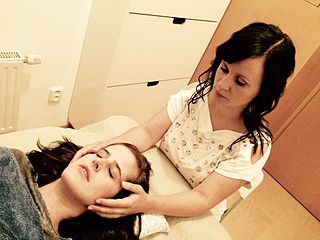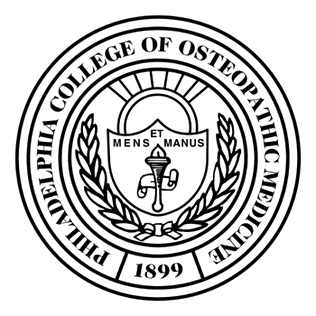
Acupuncture is a form of alternative medicine and a key component of traditional Chinese medicine (TCM) in which thin needles are inserted into the body. Acupuncture is a pseudoscience, the theories and practices of TCM are not based on scientific knowledge, and it has been characterized as quackery. There is a range of acupuncture variants which originated in different philosophies, and techniques vary depending on the country in which it is performed, but can be divided into two main foundational philosophical applications and approaches, the first being the modern standardized form called eight principal TCM and the second an older system that is based on the ancient Taoist Wuxing or better known as the five elements or phases in the West. Acupunture is most often used to attempt pain relief, though acupuncturists say that it can also be used for a wide range of other conditions. Acupuncture is generally used only in combination with other forms of treatment.
Alternative medicine is any practice that aims to achieve the healing effects of medicine, but which lacks biological plausibility and is untested, untestable or proven ineffective. Complementary medicine (CM), complementary and alternative medicine (CAM), integrated medicine or integrative medicine (IM), and holistic medicine are among many rebrandings of the same phenomenon. Alternative therapies share in common that they reside outside medical science, and rely on pseudoscience. Traditional practices become "alternative" when used outside their original settings without proper scientific explanation and evidence. Frequently used derogatory terms for the alternative are new-age or pseudo, with little distinction from quackery.

Chiropractic is a pseudoscientific alternative medicine that is concerned with the diagnosis and treatment of mechanical disorders of the musculoskeletal system, especially the spine. Chiropractors, especially those in the field's early history, have proposed that such disorders affect general health via the nervous system. The main chiropractic treatment technique involves manual therapy, especially manipulation of the spine, other joints, and soft tissues, but may also include exercises and health and lifestyle counseling. A chiropractor may have a Doctor of Chiropractic (D.C.) degree and be referred to as a doctor, and in some jurisdictions can be called a chiropractic physician, but is not a Doctor of Medicine.

Acupressure, is an alternative medicine technique often used in conjunction with acupuncture. It is based on the concept of life energy which flows through "meridians" in the body. In treatment, physical pressure is applied to acupuncture points or ashi trigger points with the aim of clearing blockages in these meridians. Pressure may be applied by hand, by elbow, or with various devices.

Osteopathy is a type of alternative medicine that emphasizes physical manipulation of the body's muscle tissue and bones. Practitioners of osteopathy are referred to as osteopaths. Its name derives from Ancient Greek "bone" (ὀστέον) and "sensitive to" or "responding to" (-πάθεια).

Auriculotherapy is a form of alternative medicine based on the idea that the ear is a micro system, which reflects the entire body, represented on the auricle, the outer portion of the ear. Conditions affecting the physical, mental or emotional health of the patient are assumed to be treatable by stimulation of the surface of the ear exclusively. Similar mappings are used in many areas of the body, including the practices of reflexology and iridology. These mappings are not based on or supported by any medical or scientific evidence, and are therefore considered to be pseudoscience.

Craniosacral therapy (CST) is a form of bodywork or alternative therapy that uses gentle touch to palpate the synarthrodial joints of the cranium. It is based on fundamental misconceptions about the physiology of the human skull and is promoted as a cure-all for a variety of health conditions.

Traditional Korean medicine refers to the forms of traditional medicine practiced in Korea.
Manual therapy, or manipulative therapy, is a physical treatment primarily used by physical therapists, physiotherapists, occupational therapists to treat musculoskeletal pain and disability; it mostly includes kneading and manipulation of muscles, joint mobilization and joint manipulation. It's also used by Rolfers, massage therapists, athletic trainers, osteopaths, and physicians

Philadelphia College of Osteopathic Medicine (PCOM) is a private medical school with its main campus in Philadelphia, Pennsylvania, and additional locations in Suwanee, Georgia and Moultrie, Georgia.

Edzard Ernst is a retired academic physician and researcher specializing in the study of complementary and alternative medicine. He was Professor of Complementary Medicine at the University of Exeter, allegedly the world's first such academic position in complementary and alternative medicine.

Alternative cancer treatment describes any cancer treatment or practice that is not part of the conventional standard of cancer care. These include special diets and exercises, chemicals, herbs, devices, and manual procedures. Most alternative cancer treatments do not have high-quality evidence supporting their use. Concerns have been raised about the safety of some of them. Some have even been found to be unsafe in certain settings. Despite this, many untested and disproven treatments are used around the world. Promoting or marketing such treatments is illegal in most of the developed world.
Dry needling, also known as "trigger point dry needling", is a technique used by many different healthcare disciplines, including acupuncturists, physical therapists, physicians, chiropractors, dentists, veterinarians, occupational therapists, athletic trainers, myotherapists (Australia), among others. Acupuncturists usually maintain that dry needling is adapted from acupuncture, but others consider dry needling as a variation of trigger point injections. Dry needling is sometimes referred to as intramuscular stimulation (IMS), especially in Canada. It involves the use of either solid filiform needles or hollow-core hypodermic needles for therapy of muscle pain, including pain related to myofascial pain syndrome. Dry needling is mainly used to treat myofascial trigger points, but it is also used to target connective tissue, neural ailments, and muscular ailments. The American Physical Therapy Association defines dry needling as a technique used to treat dysfunction of skeletal muscle and connective tissue, minimize peripheral nociception (pain), and improve or regulate structural or functional damage.
Health is the state of complete physical, mental, and social well-being and a positive concept emphasizing social and personal resources, as well as physical capacities. This article lists major topics related to personal health.

Veterinary chiropractic, also known as animal chiropractic, is the practice of spinal manipulation or manual therapy for animals. Veterinary chiropractors typically treat horses, racing greyhounds, and pets. It has become a fast developing field in animal alternative medicine.
Osteomyology is a form of alternative medicine found almost exclusively in the United Kingdom and is loosely based on aggregated ideas from other manipulation therapies, principally chiropractic and osteopathy. Osteomyologists are often therapists who have usually been trained in osteopathy or chiropractic but take on the title osteomyologist after they have refused to be regulated by the General Osteopathic Council (GOsC) or the General Chiropractic Council (GCC) for political or philosophical reasons, or cannot join as they have not submitted the required papers to the governing bodies or achieved training standards necessary to satisfy the terms of the acts of parliament.

Trick or Treatment? Alternative Medicine on Trial is a 2008 book about alternative medicine by Simon Singh and Edzard Ernst.
George Lewith was a professor at the University of Southampton researching alternative medicine and a practitioner of complementary medicine. He was a prominent and sometimes controversial advocate of complementary medicine in the UK.

The German acupuncture trials were a series of nationwide acupuncture trials set up in 2001 and published in 2006 on behalf of several German statutory health insurance companies because of a dispute as to the usefulness of acupuncture. They consisted of one observational study on acupuncture side effects, and four randomized controlled trials (RCTs) investigating acupuncture treatment for low back pain, knee osteoarthritis, migraine prophylaxis, and tension-type headache. The trials are considered to be one of the largest clinical studies in the field of acupuncture.
Alternative medicine describes any practice which aims to achieve the healing effects of medicine, but which lacks biological plausibility and is untested or untestable. Complementary medicine (CM), complementary and alternative medicine (CAM), integrated medicine or integrative medicine (IM), and holistic medicine are among many rebrandings of the same phenomenon.











